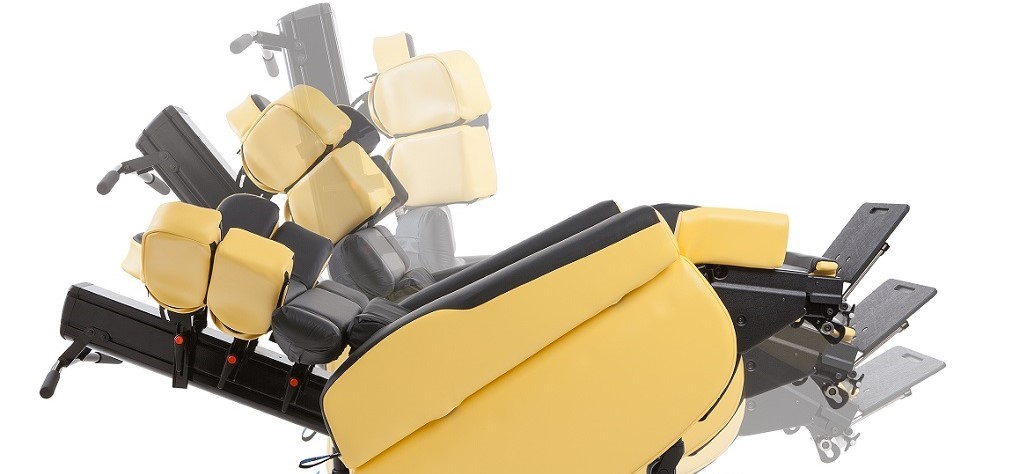Choosing the right product for indoor seating needs

Indoor seating options offer multiple benefits to children with limited or reduced motor ability. In addition to comfort, such seating systems provide adjustable support for changing ability and for growth while enabling greater independence during activity participation.
Choosing the Right Product for Indoor Seating Needs
written by
Venesha Moodley,
Clinical Educator
(B. OT, Postgrad Cert in Clinical Rehab)
A Consensus Statement1 on 24-hour postural management recommended that the most severely affected children should be introduced to special seating from 6 months of age. 24-hour postural management approach includes positioning during the day, while seated in a wheelchair to access various environments and the use of indoor seating for activity participation, in addition to other assistive equipment items considered suitable for the individual. While wheelchair seating is beneficial for seated posture, using indoor seating alternatives during the day as a second option provides choices that are more suited to day-to-day activities and provide benefits such as:
- Alternate positioning for comfort and relaxation while providing postural stability.
- Opportunities for active sitting and strengthening of muscles in the core and the back.
- Therapeutic benefits such as facilitating improvements in physical ability (sitting balance, head control etc).
- Minimise excess energy expenditure required for postural stability and increase fine motor ability and concentration.
- Facilitate greater independence in task participation such as improved supported posture to enable independence in feeding.
- Explore the opportunity for children with limited sitting ability to join the family in the lounge room, remain seated at the table with other children during group learning activities or participate in one to one therapy sessions in a more receptive position.
Indoor seating options include Floor sitters, School chairs, Hi-Lo chairs and Leisure Seating options, all of which assist with social interaction and recreational activity.

Floor Sitters provide:
- Opportunities for children to remain seated in a mobile base.
- Recline angles to stabilise the pelvis. A floor sitter with a contoured bucket seat, pommel and optional wedges is ideal for this.
- High backrest with rearward tilt and lateral trunk support to stabilise the trunk. The added benefit of gravity together with the rearward tilt angle from the separate seat wedge provides a receptive position for children with low trunk control.
When choosing floor sitters, consider:
- Base options to reduce manual handling when moving the indoor seats between rooms.
- Transfer techniques to manage transfers to and from the seat due to contouring of the seat.
HI-LO SEATING & SCHOOL CHAIRS
Hi-Lo Seating and School Chairs provide:
- Supportive seating during homework or other table-top activities. For example, the Rifton Activity Chair on a standard or Hi-Lo base with tilt in space provides easy transition between postures. Standing transfers can be effectively used during classroom tasks or other table-top activities. The spring option permits self-generated dynamic motion, while accessories such as height adjustable armrests, thigh guides, lateral trunk supports, chest and hip harnesses, height adjustable legs (with or without locking castors) provides varying levels of postural support and ease of manoeuvrability of the chair. The Hi-Lo base operated by a foot pump enables ease of height adjustment to varying work surface heights, permitting interaction with peers in multiple environments.

- Assistance with head and trunk control. A good example is the Madita Fun Therapy Chair. It has a three sectioned backrest, including headrest which permits the option of progressively making gains in head and trunk control. The headrest and upper section of the backrest assists during periods of fatigue. The seating also offers adjustment to assume a lying position during periods of recovery or relaxation. Forward seat angle adjustment facilitates a working posture for the child, encouraging activation of the back muscles. Versatile seat height adjustment ranges from low floor level to varying table heights, permitting participation in fun learning activities, feeding and other therapy intervention.

- Postural stability and comfort for individuals with moderate to complex needs. Alternative indoor seating such as Careflex SmartSeatPro™or the JCM Jupiter Home Seating Chair are specialist chairs which offer postural comfort and pressure relief. The range of adjustability (seat depth, backrest height lower legrest height, lateral support height and depth adjustment) with the added features of tilt and recline, provides tailored solutions for varying levels of challenging postures which would not be accommodated in standard recliners. The Careflex SmartSeatPro™ offers rotation of the backrest components and can be effectively used as part of a 24-hour postural management program. The combination of tilt and recline is beneficial to manage postures including significant scoliosis of the spine. The SmartSeatPro™ includes WaterCell Technology which disperses pressure and adjusts to changes in the users’ position. This is topped with a viscoelastic memory foam and covered by a waterproof, antibacterial cover.

What to consider when selecting indoor seating options for trial:
- Growth adjustment for maximum use.
- Angle adjustments for use in different positions depending on the child’s tolerance for different postures.
- Padded surfaces for safety.
- Available levels of support or positioning aids required to assist with stabilising the child’s posture.
- The size of the base of the seating system (footprint) to ensure it fits into the desired environments within the home and/or school.
- The availability of different mobility bases which the seating can mount onto for use, depending on the activity.
- What is involved when transferring a child to and from the indoor seating option?
- Ease of use and adjustment – tool free adjustments; weight, manoeuvrability of the indoor seating.
- Transfer method to and from the indoor seating.

